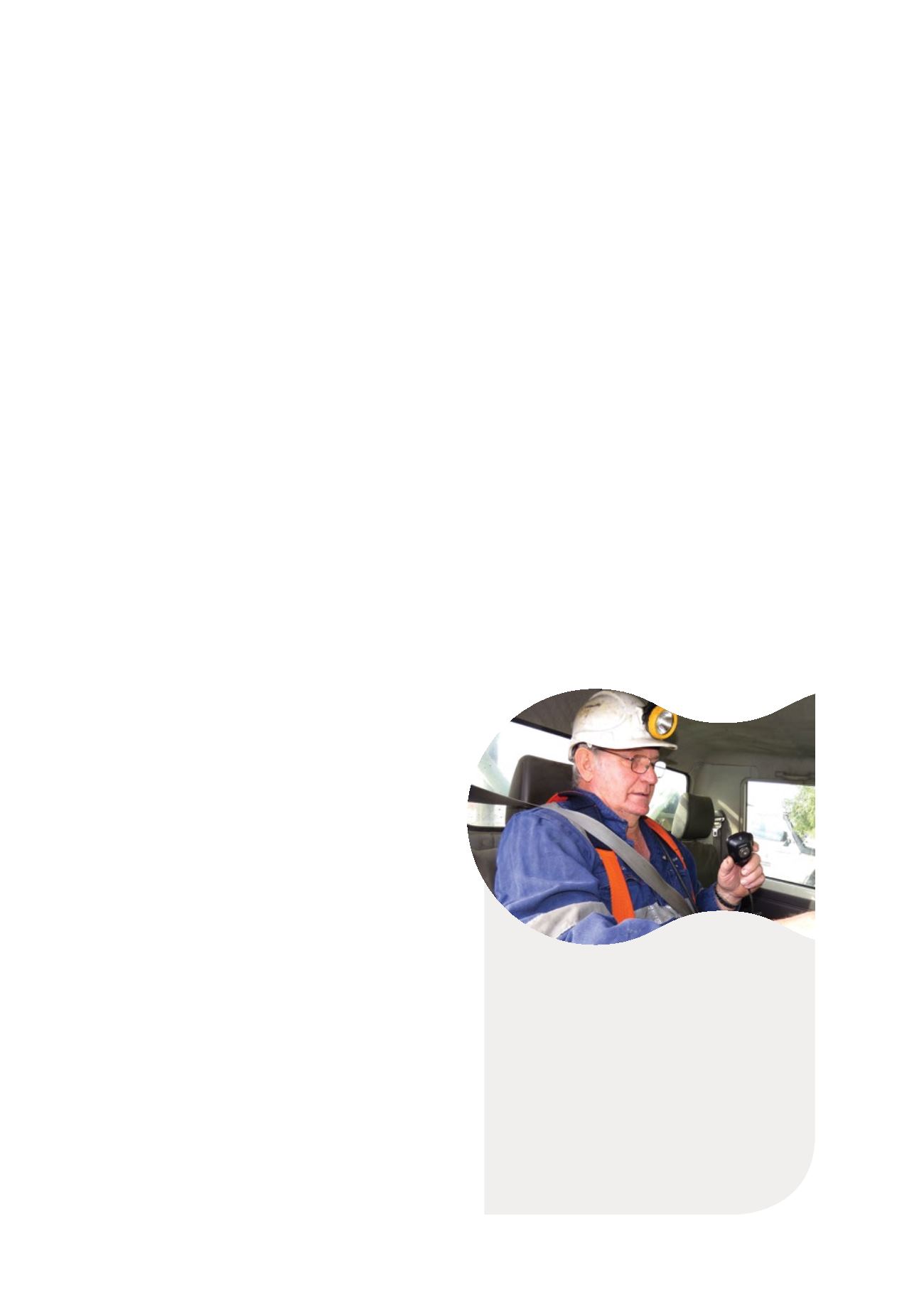

38 Independence Group NL
CONSUMABLES
The main consumables used at Jaguar in FY2015 were
natural gas, diesel, grinding media (steel balls) and
explosives.
The majority of power generation for the Jaguar
Operation is fuelled by compressed natural gas (CNG)
at the Jaguar power station. However, some areas (e.g.
the Jaguar accommodation village) are powered by local
diesel-fuelled generators as power lines have not been
installed to all areas.
Water is pumped from the Bentley underground mine
to settling dams then onto the Jaguar process water
dam. Approximately 1,100 MLpa is dewatered from
underground. This water is used in the processing plant,
re-used underground, and for exploration activities. Any
surplus water is discharged into the historic Teutonic Bore
mine pit, allowing it to be pumped back to the processing
plant if required. The volume of water discharged into the
Teutonic Bore pit is approximately 425 MLpa.
WASTE
The key waste streams from the mine are waste rock and
tailings.
In addition to the mineralised ore, waste rock is extracted
from underground and placed in waste rock dumps. This
rock contains some material that is classified as PAF.
The PAF rock from the Jaguar Operation has been
encapsulated within non-PAF material and rehabilitated.
Annual photo-monitoring records vegetation health and
provides clear evidence for the presence or absence of
acid mine drainage (AMD). Results to date suggest that no
AMD is occurring.
As noted previously, such material, if left unmanaged
and exposed to the elements, can generate an acidic
discharge that can cause downstream impacts on biota
and groundwater. Given this, the waste rock dumps
have been designed, and are being constructed, so
the potentially-acid forming material is blended with
neutralising waste rock and then placed on top of the
waste dump which prevents run-off and leaching. The
waste dump is situated in a previously disturbed area
away from ephemeral streamlines so any natural run-off
is contained within the site’s boundaries. The waste rock
is then utilised in the Bentley CAF plant and returned
underground which prevents prolonged exposure to the
elements, thus reducing acid mine drainage potential.
Current forecasts predict that the entire Bentley waste
rock dump will be crushed and utilised for the production
of CAF. This means the current waste rock dump area
will require minor rehabilitation at mine closure and
will have no risk of AMD as any PAF waste rock will be
underground.
The mining process generates tailings, which are pumped
to the tailings storage facility for disposal. The facility is
designed to allow the tailings to settle forming a ‘beach’
that drains to a central pond. Ponded tailings liquor is
recovered and returned to the process plant. Tailings
are cyclically deposited and the beaches evaporatively
dry, which enables the dried tailings to be progressively
stacked higher. A key environmental consideration in
this part of the process is the classification of the tailings
as PAF and the low pH (ranging 3-5) of the tailings
return water. It is likely that both the water and tailings
would have a detrimental effect on the surrounding
environment if released.
A small volume of both putrescible and hard waste is
disposed of in the onsite landfill.
NATIVE TITLE
At present, the Jaguar Operation is not subject to a Native
Tile claim under the
Australian Native Title Act 1993
.
LIFE OF MINE
At present the expected life of mine based on current
reserves for the Jaguar Operation is two and a half years.
A mine closure plan has been developed and is updated
every three years.
Noel commenced work in the mining industry in
1967. He has held many and varied roles including
leadership positions – having worked as both
Foreman and Shift Boss at different mines. Noel
has been witness to the evolution in mining’s
processes, machinery and safety improvements.
“I like the hard work and the challenges then
and now. My job keeps me fit and well.”
Noel McGuirk
Underground Mine Supervisor
Long Operation


















